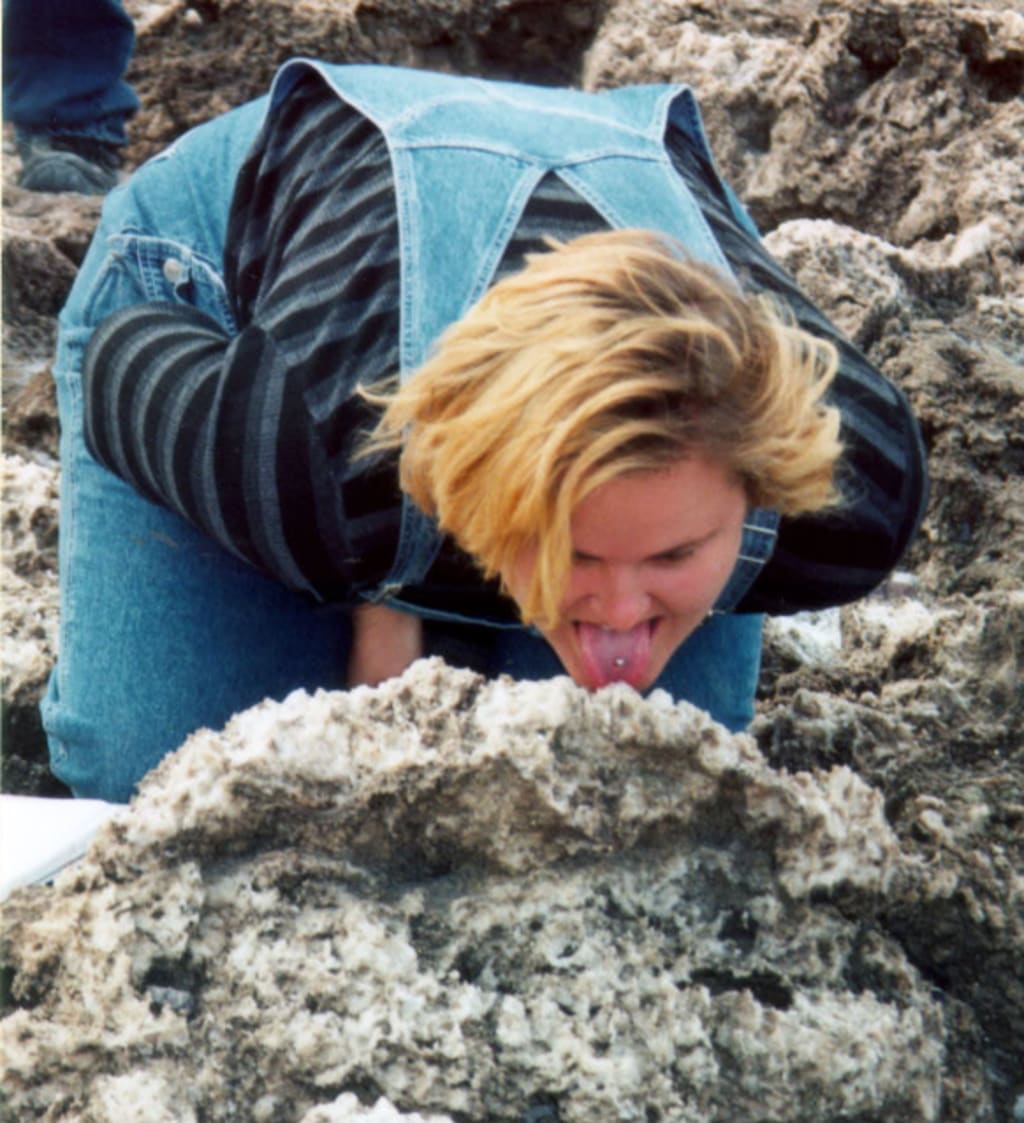Why Lick Rocks by Geologists?
Top Ten Indicators That You Might Be a Geologist

It turns out geologists can learn a lot with their lips in what appears to any other field of research to be a take-your-life-into-your-hands situation.
Do not be alarmed if you ever find a geologist out walking with a rock stuck to their tongue. They have merely stumbled upon a fossilised bone, not given in to the midday heat and began trying to consume their surroundings.
Scientists have used a wide range of odd methods of study in their quest for knowledge, from allowing themselves to get infected by hookworms and botflies to using brooms to detect the burning of hydrogen (keeping it simple, NASA). A few rocks in your mouth look fairly mild in comparison.
For geologist and palaeontologist Dr Randall Irmis of the Natural History Museum of Utah, it has undoubtedly stopped being noteworthy. Irmis has worked in the field for decades, so the geological experiments that would seem downright bizarre to an outsider have become routine.
Even more amazing is that despite having tasted his way through geological time for so long, he has so far avoided licking anything really repulsive, with the exception of fossilised faeces, of course.
We spoke with Irmis to learn more about the practice of rock licking and what it can teach us about the tastes, odours, and textures that may be found while exploring late Triassic rock layers.
Do researchers lick minerals?
I'm a palaeontologist and a geologist, so I can't speak for all scientists, but there are a few reasons why we might lick or touch rocks to our tongues. The fact that we really use it to determine whether or not something is a fossil bone is possibly the one that sparks the most interest. In contrast to most rocks, petrified wood, and the like, it turns out that fossilised bones will adhere to your tongue with a small amount of moisture. Of course, there are always exceptions.
Is it the texture or the flavour?
RI: The fossil bone test asks only one question: Does it stay on your tongue? However, another reason why geologists would put rocks in their mouths is that we frequently have an interest in the size of the sedimentary rock's grain composition. It turns out that grinding a small piece of rock between your teeth is one of the best ways to determine in the field if a rock is made of silt or clay. Clay is smooth if it is. It contains silt if it seems a touch grainy.
RI: That's a tough one because it happens so frequently that I occasionally forget to think about it. When we're out hunting for fossils and prospecting for new sites, there are several instances where you pick up something and are almost certain it's a fossil bone, but when you stick it to your tongue, it doesn't stick. So you must then reevaluate. If it's not fossilised bone, it can be wood or hardened fossilised roots.
The fact that some of the rock strata I work with, in the western US, are from the late Triassic period, and there are actually multiple layers that are divided out depending on their grain size, so one layer has more silt than the other, is one way in which the test between clay and silt has been useful. Therefore, one of the greatest ways to determine whether the rock contains silt or clay is to be able to determine exactly which stratum you are in.
Awful surprises, if any?
RI: Fortunately, not in most cases. Sometimes what you pick up turns out to be a modern cow bone, but happily, there are no unpleasant tastes. It goes without saying that you should check to see if it's at least relatively clean and not coated with debris. I usually dig in to collect a fresh sample as we're biting down on the sedimentary rocks.
Nevertheless, it's a good practical joke to ask someone to test a piece of coprolite, which is fossilised faeces, for bone content. Thankfully, this hasn't happened. Naturally, since it is fossilised, there is nothing wrong with that. It dates back millions of years. It won't harm you in any way, but it always makes people laugh.
What about further strange tests?
RI: That's a great question for scientists to ask because we're so used to doing it that it doesn't seem strange to us, but if someone else saw us doing it, they'd probably find it really odd.
One thing that comes to mind is the terrible smell that some varieties of limestone truly have. As a result, you might see geologists sniffing limestone and splitting it open. This limestone has a foetid scent. Though I'm not certain for sure, I think that has something to do with the organic matter that has been kept in the limestone.
The colour of the pebbles can be quite instructive, therefore we also bring around colour charts that resemble paint samples.
If a geologist has it, they don't have any immediate plans to redecorate, at least not in the field.






Comments
There are no comments for this story
Be the first to respond and start the conversation.